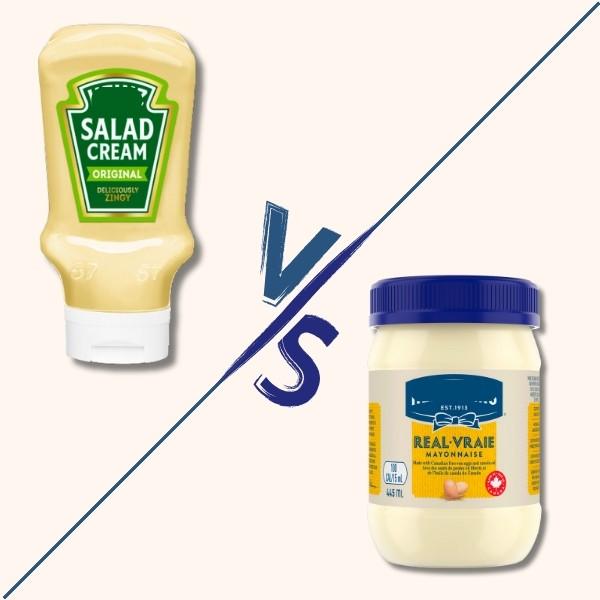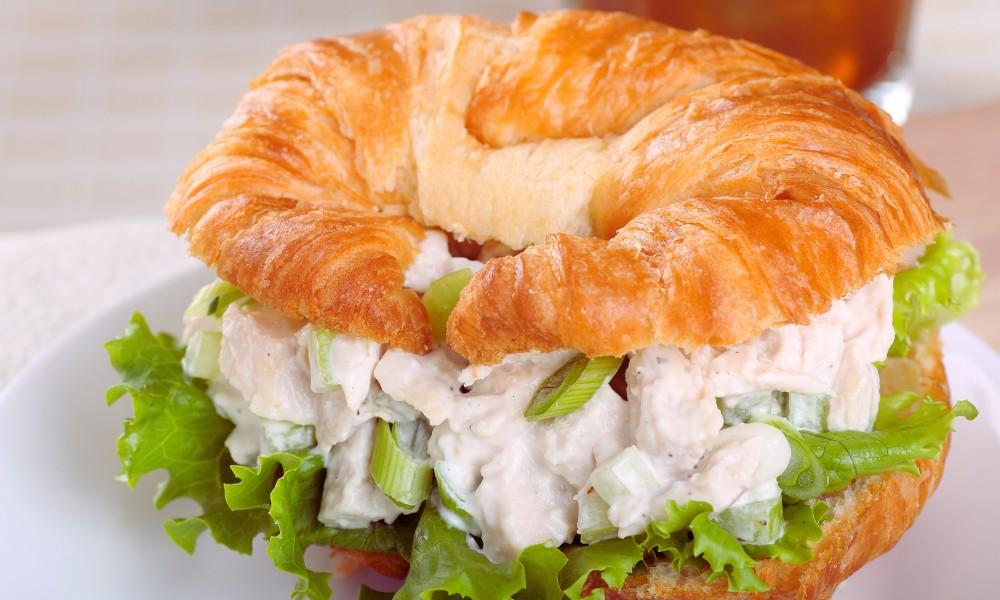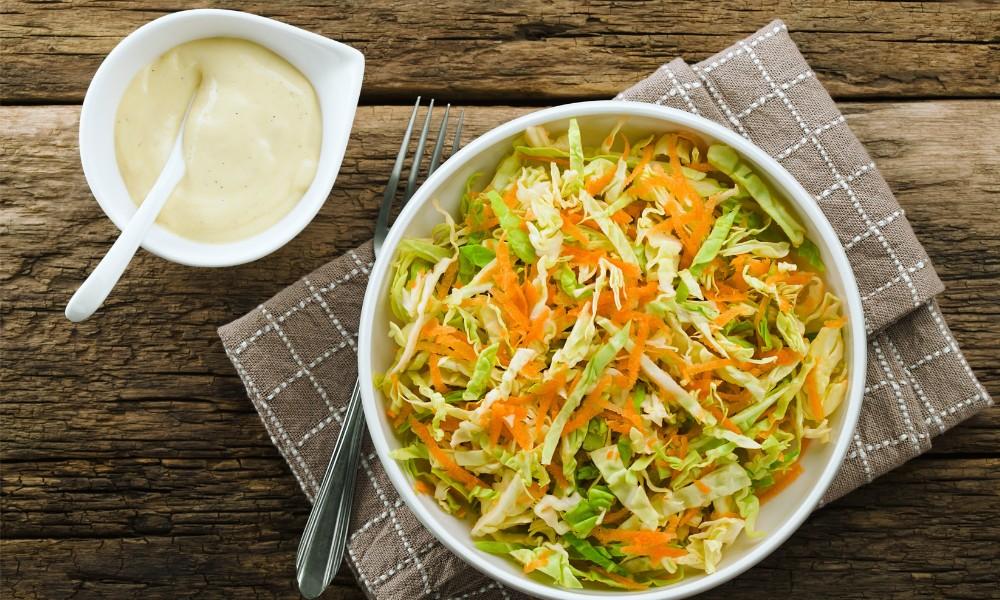Discover the key differences between salad cream and mayonnaise: flavor, consistency, and nutrition. Choose the right condiment for your culinary creations and dietary needs. Understand their unique roles in enhancing your dishes.
🧐 Ingredient Analysis: Salad Cream & Mayo

When patrons at the Boat Basin Cafe would ask me about the difference between salad cream and mayo, I’d often tell them it’s all in the ingredients. Let’s break it down, shall we? Both condiments share a base of egg yolk and oil, but their journeys diverge with the additional components that define their unique characters.
🔎 Salad cream, often a British staple found in everything from sandwich cream to salad dressing, demands more acidic ingredients. Heinz salad cream, for example, uses more vinegar than oil, which imbues it with its signature zing. Furthermore, it often includes mustard and sugar, adding layers of tanginess and sweetness that mayo doesn’t traditionally have. 🥗
🔎 Mayonnaise, or as some recipes call it, real mayonnaise, opts for a higher oil-to-egg ratio and is usually simpler: oil, egg yolks, and vinegar or lemon juice, with a pinch of salt. Some variations might include a whisper of mustard, but the primary flavor profile is rich and creamy. This foundation lets the quality of oil shine, making the choice of olive, vegetable, or any other type an important consideration for the end-flavor of your mayonnaise salad dressing. 🥪
| Salad Cream | Mayonnaise | |
|---|---|---|
| Base | Egg yolk, oil | Egg yolk, oil |
| Acidity | High vinegar content | Moderate vinegar/lemon juice |
| Sweetness | Sugar added | Usually none |
| Tanginess | Mustard common | Occasionally present |
| Consistency | Thinner and pourable | Thicker and spoonable |
While each is unique in makeup, it’s this cream vs. dressing debate that not only spices up our palates but our conversations too.
👨🍳 Flavor Profiles Explored
🗝️ Now, on to the flavor arena where salad cream vs mayo really ignites taste buds debate. During my time whipping up batches of both condiments in the kitchen, I discovered that understanding their flavor profiles is key to deciding which condiment to crown your dish with.

Salad cream’s flavor is distinctly tangy and slightly sweet due to its higher vinegar content and the addition of sugar. The vinegar not only adds acidity but also a brightness that can lift the heavier elements within a dish. Some liken it to a zesty dance on the palate – it has that British bite that can make a salad pop or add a lively schmear to sandwiches.
On the other side, mayonnaise is a study in subtlety and richness. The main event is the luxurious mouthfeel created by the oil emulsified with egg yolks. The flavor is milder, more about texture and mouth-coating creaminess than an assertive flavor punch. It’s why mayo finds harmony in salads mayonnaise style or as the creamy linchpin in a classic chicken sandwich.
| Aspect | Salad Cream | Mayonnaise |
|---|---|---|
| Flavor Strength | Tangy, Sweet | Mild, Creamy |
| Texture | Lighter, Zesty | Rich, Velvety |
| Culinary Role | Flavor Enhancer | Texture Enhancer |
As a chef, I learned to listen to the dish. If it’s begging for vibrancy, salad cream often answered the call. If it’s all about indulging in smoothness, mayo would be the sous-chef of the hour.
Regional Variations
Exploring the regional variations of salad cream and mayonnaise reveals a fascinating culinary map. Different parts of the world have put their unique spin on these condiments, tailoring them to local tastes and culinary traditions. Let’s take a closer look at how these variations manifest across continents.
| Region | Salad Cream Variations | Mayonnaise Variations |
|---|---|---|
| United Kingdom | Traditionally tangy with a higher vinegar content, often used in sandwiches and salads. | Richer in flavor, used in a variety of dishes from salads to dips. |
| United States | Less common, but similar products like Miracle Whip offer a sweeter, tangier alternative. | Creamier and thicker, often used in sandwiches, salads, and as a base for sauces. |
| Europe | Variants include a lighter, more acidic version in some countries. | May include additional flavors like garlic or herbs, particularly in Mediterranean regions. |
| Asia | Not as common, but some regions have spicier or sweeter versions. | Often contains a lighter texture and additional ingredients like soy sauce or wasabi for a distinct flavor profile. |
📜 Historical Context: The Evolution of Condiments
💭 Stepping back in time, let’s uncover the storied past of salad cream and mayonnaise. These condiments, now staples in kitchens worldwide, have rich histories rooted in diverse culinary traditions. Tracing their origins and evolution not only adds depth to our understanding but also reveals how they became the beloved flavors they are today.
🇫🇷 Mayonnaise is believed to have originated in France or Spain, with some accounts attributing its invention to the French chef of the Duke de Richelieu in 1756, during the Seven Years’ War. It started as a simple emulsion of egg and oil, and over time, evolved into the creamy, rich condiment we know today, spreading across Europe and eventually, the globe.
🇬🇧 Salad cream, on the other hand, has its roots firmly planted in British culinary soil. Emerging in the early 20th century as a more economical alternative to traditional mayonnaise, it quickly became a household favorite in the UK. With its distinct tangy flavor, it offered a unique twist on the classic mayo and carved out its own niche in the condiment world.
📌 Understanding these origins not only enriches our appreciation of these condiments but also highlights the dynamic nature of culinary history, where recipes evolve and adapt through time and across cultures. 👨🍳
Nutritional Comparison
The nutritional comparison between these two is a hot topic at any health-conscious table. Knowing what goes into your body is as important as the flavors that delight your palate. While it’s true that mayonnaise is higher in calories than salad cream, there’s more to this story.
🕵️♂️ Salad cream, due to its higher vinegar and lower oil content, generally contains fewer calories and fat compared to its creamy counterpart. It’s often the choice for those keeping an eye on their waistline but still looking for that flavor hit in their meals. In Britain, salad cream is an enduring standby for those who want to keep things light without sacrificing zing.
🕵️♂️ Mayonnaise, in contrast, has a higher calorie and fat content because of its oil richness. The type of oil used can also sway the health scale—olive oil may offer beneficial monounsaturated fats, whereas other oils might add undesirable saturated fats. However, mayo also provides a bit of protein from the egg yolks, along with some Omega-3’s if you’re using egg yolks from hens fed on omega-3 rich diets.
| Component | Salad Cream (Per Serving) | Mayonnaise (Per Serving) |
|---|---|---|
| Calories | Lower | Higher |
| Fat | Lower | Higher |
| Protein | Minor | Minor |
| Flavor Impact | High, tangy | Mild, creamy |
📌 The takeaway for the health-minded is clear: use salad cream for a lower-fat, zestier option, and mayo for a richer, high-calorie indulgence. But remember, moderation is key, whether it’s salad cream on a leafy green or mayo in your potato salad. 🥗
Usage Scenarios in Cooking
Choosing between salad cream and mayo often comes down to the specific culinary match-up. Think of them as players on a team; each brings their unique strengths to the game. In my Boat Basin Cafe days, I paired them with dishes that resonated with their inherent qualities to create harmonious and flavorful experiences.

For salad cream, think about scenarios where a sharp, sweet kick can elevate a dish. It excels in reigning over simple, crunchy greens, drizzled over a classic British potato salad, or adding dimension to cold pasta salads. I’ve even recommended it as a lively dip for crudité or slathered on a shrimp cocktail to give it a bit of pizzazz.
Mayonnaise, on the other hand, shines when richness and smoothness are required. Its inherently creamy texture makes it a perfect base for all sorts of aiolis and sauces. It’s also the heavyweight champion for turning a plain chicken, egg, or tuna salad into a creamy delight. In my chef days, mayo was the go-to for gluing together a delectable coleslaw or as a lush spread for gourmet sandwiches.

| Dish Type | Best with Salad Cream | Best with Mayonnaise |
|---|---|---|
| Salads 🥗 | Simple greens, potato salad | Coleslaw, pasta salad |
| Sandwiches 🥪 | Light, tangy toppings | Rich, creamy spreads |
| Dips 🥣 | Veggie platters | Artisan aiolis, dips for fries |
| Sauces 🫕 | Seafood sauces | Base for complex sauces |
It’s all about context and desired outcome—in the culinary dance, both partners can take the lead, given the right tune.
📌 Texture and Consistency Contrasts
In the culinary world, texture and consistency are as significant as taste. Whether you’re making a dressing or adding a dollop to your dish, salad cream, and mayonnaise’s different textures influence the outcome significantly.
✅ Salad cream presents a pourable texture that tends to be thinner and lighter. This physical property makes it an excellent drizzle for salads, contributing to a dressing that coats the leaves lightly without weighing them down. It’s also why this condiment can seamlessly blend into more watery recipes without curdling or becoming unappetizingly thick.
✅ Mayonnaise boasts a denser texture, one that can hold its form and add body to dishes. Think of the last time you had a sandwich where the mayo acted as a moisture barrier between the bread and the garden-fresh tomatoes. Or the way mayo clings to your spoon just so, making it perfect for creating those delectable peaks on deviled eggs. Its stable emulsion lends textural richness and makes mayonnaise a binding agent in recipes like meatballs or a moist maker in cakes.
| Criteria | Salad Cream | Mayonnaise |
|---|---|---|
| Consistency | Pourable, Lighter | Spoonable, Thicker |
| Culinary Use | Dressing, Drizzling | Binding, Spreading, Filling |
| Temperature Stability | More vinegar helps stability | Prone to separation with heat |
So next time you’re crafting a meal, consider if you’re looking for a light toss or a rich blend. The right choice can elevate your dish from home-cooked to chef’s kiss. 😉
Innovative Twists: Substitutes & Mixes
Creative culinary twists can transform a good dish into a great one. As a chef at the Boat Basin Cafe, improvisation with ingredients like salad cream and mayo was part of my daily delight. The versatility of these condiments means they can be mixed and matched or substituted to fit an array of dietary needs and flavor preferences.
Let’s dream up some innovative mixes. How about a fusion of the two for a balanced dressing? Combining salad cream’s tanginess with mayonnaise’s lushness could create a concoction perfect for a roasted potato salad. And what if you’re out of mayo? A dollop of Greek yogurt with a bit of mustard might just be the substitute you need—with a bonus protein kick!
Or perhaps you’re catering to vegan friends? Consider the base elements of these condiments—cream, egg, and oil—and look for plant-based alternatives that mimic these textures. Avocado can stand in for the oil-rich component, while soaked cashews blended into smoothness cover the creamy aspect. Even a puree of silken tofu can provide a similar mouthfeel with far fewer calories.
| Ingredient | Substitute Suggestion | Use Case Scenario |
|---|---|---|
| Egg (Mayo) | Mashed avocado, silken tofu | Vegan spreads, dressings |
| Oil (Mayo) | Pureed soaked cashews | Rich vegan sauces |
| Salad Cream | Yogurt with mustard | Healthier dressing options |
| Mayo & Salad Cream | Half-and-half mix | Balanced dressing blend |
👉🏻 The rule of thumb is to think about the role each condiment plays in your recipe and seek out alternatives that provide a similar function. Who knows, perhaps a new Boat Basin Cafe classic is just a substitute away.
📌 Remember, whether you’re dressing a garden salad or mixing a binder for a seafood spread, knowing the characteristics and uses of salad cream and mayo will enlighten your culinary choices. Just like I reminisce about my Boat Basin Cafe days, I hope these tidbits and tricks enhance the essence of your own food adventures.
Continue your culinary journey and uncover more fascinating facts and delicious recipes by exploring a variety of other flavorful spreads and sauces:
FAQs
Salad cream vs mayo for sandwiches
For sandwiches, it largely depends on the flavors you want to highlight. Salad cream can add a zestier, lighter touch perfect for simple, fresh fillings. Mayo is preferable for a smooth, creamy experience, complementing more savory or rich sandwich ingredients.
Salad cream vs mayo calories
In general, salad cream is lower in calories than mayonnaise due to its higher vinegar content and lower oil content. But always check the labels as different brands may have varying formulations.
Can you use salad cream instead of mayo?
Yes, you can use salad cream instead of mayo if you’re looking for a tangier, slightly less creamy texture. In sandwiches, dressings, and dips, they can often be used interchangeably depending on your taste preference.
Salad cream ingredients
Standard salad cream ingredients include egg yolk, oil, vinegar, mustard, sugar, and sometimes other flavorings and stabilizers. It shares a similar base with mayonnaise but contains less oil and more vinegar and additives for flavor.
Is salad cream better for you than mayonnaise?
Whether salad cream is “better” for you than mayonnaise depends on your dietary goals. Salad cream is lower in fat and calories but may have more added sugars. Mayonnaise is higher in fat, particularly if made with oils high in saturated fats.
Is salad cream just mayo with vinegar?
Salad cream is not just mayo with vinegar. It also contains other ingredients like sugar and mustard, and has a different oil-to-vinegar ratio, resulting in a distinct taste and thinner consistency.
Is salad cream like Miracle Whip?
Salad cream is similar to Miracle Whip in that they both are tangier and sweeter than mayonnaise, and both have a thinner consistency. However, they have different spice profiles and Miracle Whip is a brand-specific formula.
What is the American version of salad cream?
There isn’t a direct American equivalent to British-style salad cream, but the closest comparison would be sandwich spreads like Miracle Whip. These spreads share a similar tanginess and are less rich than traditional American mayonnaise.






